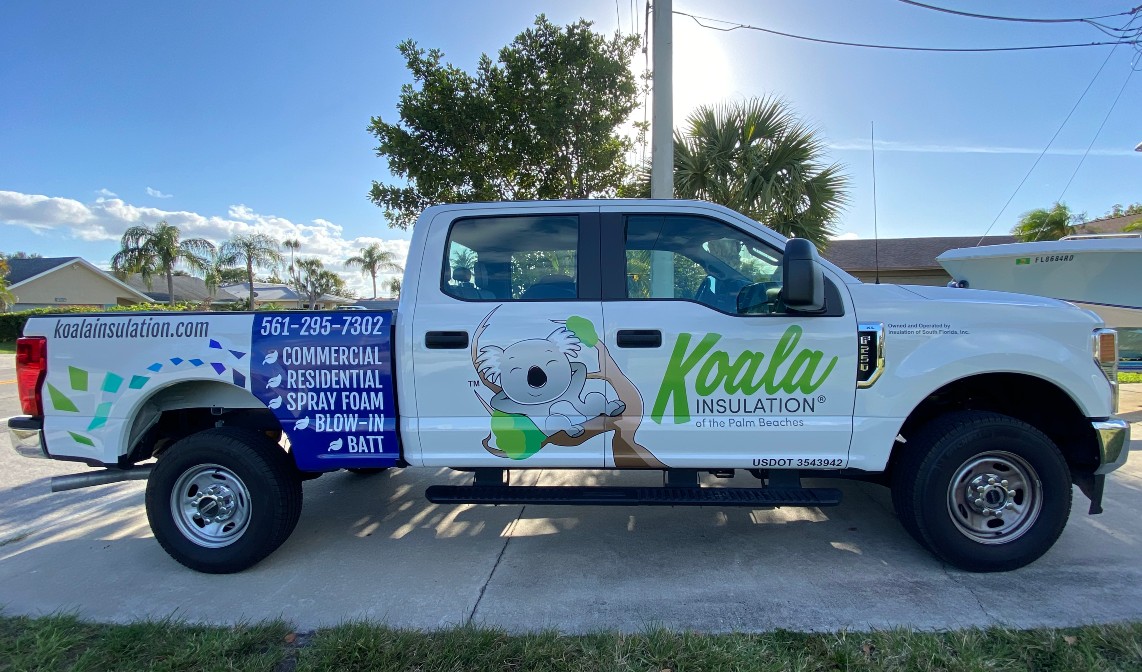
What is insulation R-Value?
Insulation is a material that resists conductive heat flow, and can come in all shapes and sizes including fiberglass, cellulose, spray foam, rock wool, and other materials. Most insulation is measured in terms of its resistance value to conductive heat flow, otherwise known as R-Value. The R-Value of insulation is determined by multiple factors including the thickness, density, and type of material used. Moisture accumulation, temperature, and the age of the material can also come into the equation for R-Value.
A home may have multiple different layers of insulation with different R-values and thickness, which can all be added up to come up with the R-value of the insulation in your specific home. An example of this may be batt insulation with fiberglass blow in over top. R-19 batt insulation is often installed in older homes in the Palm Beach, Martin County, and Port Saint Lucie areas, and many times it’s cost effective to simply add blow in fiberglass insulation over the top fo the batt, resulting in two different layers that are different depths, but ultimately create the minimum R-Value per the local code, which is R-38 in an attic.
Heat flow resistance can also depend on where and how insulation has been installed. Any compression of insulation, such as putting plywood for storage, will decrease the R-Value of that insulation. This can be true for walls as well. The insulation you put in walls must be the correct depth, otherwise you’ll be spending more money on higher grade insulation only to have it compressed into what could have been a less costly option. Other examples of this are incorrectly installed, or displaced batt insulation that does not correctly create a heat barrier.
Adding more insulation to your home will resist more conductive heat flow from the attic to the living space, thus increasing the R-Value of the insulation. Generally speaking the “deeper” the insulation the higher the R-Value. The exception to this rule is loose fill, or Blow-in insulation. The reason being is when it’s initially blown into an attic space it will be “fluffy”, but over time it will compress on the weight of itself. This compression is accounted for with this insulation, thus 10.5” of blow in cellulose may become 9.5” over the course of a few years, and not lose R-Value.
The recommended and/or required R-Value of a type of insulation will depend on what you’re insulating, and the material you’re using to insulate the area. External walls, attics, and floors in the Palm Beach, Stuart, and Port Saint Lucie areas that are insulated with materials other than spray foam must be insulated with the following minimum R-Values:
- 2x4 walls - R-13
- 2x6 walls - R-19
- Attics - R-38
- Floors and crawl spaces - R-13
Spray foam has different calculated values, and should not be look at the same as batt or blow in insulation. As an example R-38 is the code for fiberglass, where 5.5” of spray foam only has an R-value of R-21, but is much more efficient than an R-38 fiberglass insulation installation. Click Here to learn more about spray foam R-values.
Ready to book your free insulation evaluation?
We have 3 convienant ways for you to get in touch
We Provide Insulation Services to the Following Palm Beaches Areas
West Palm Beach, North Palm Beach, Palm Beach Gardens, Wellington, Hobe Sound, Jupiter, Loxahatchee, Palm Beach, Port Saint Lucie, Jensen Beach, Palm City, and Stuart
Counties Served
Palm Beach County, Martin County, & Saint Lucie County
Zip Code
33401, 33403, 33404, 33405, 33406, 33407, 33408, 33409, 33410, 33411, 33412, 33413, 33414, 33415, 33417, 33418, 33455, 33458, 33469, 33470, 33477, 33480, 34952, 34957, 34990, 34994, 34996, 34997
